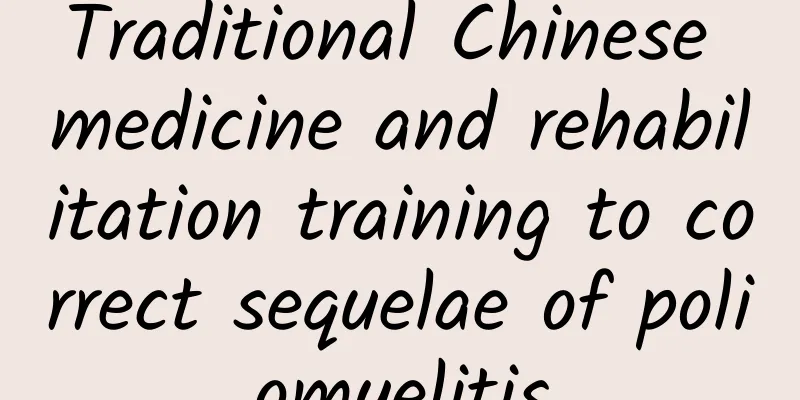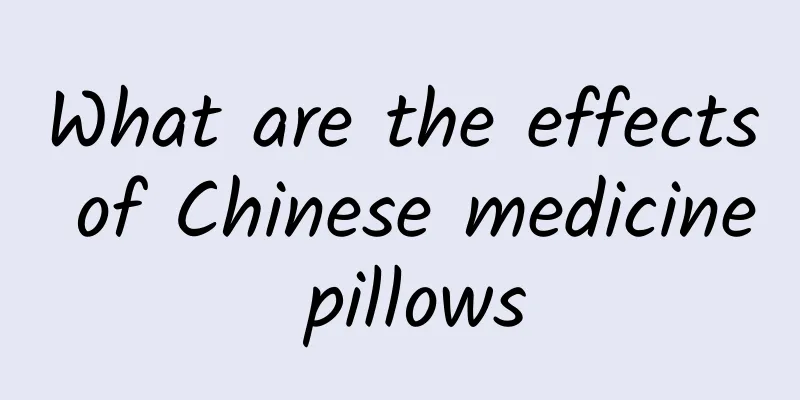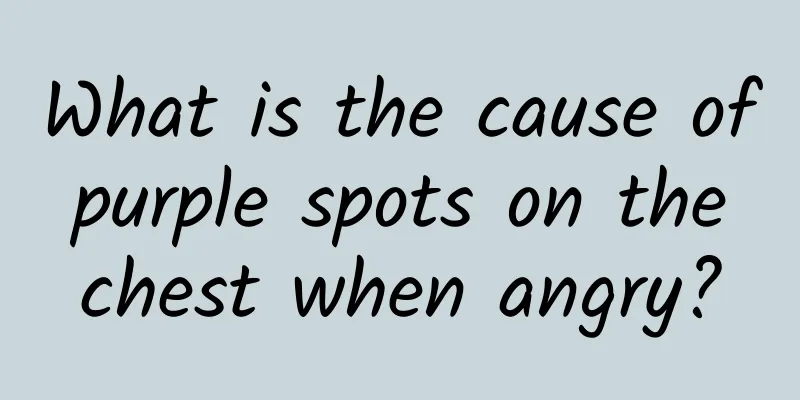Traditional Chinese medicine and rehabilitation training to correct sequelae of poliomyelitis

|
Polio is a disease that has a great impact on children's growth and development. Especially when the sequelae of polio are severe, it can cause lifelong limb disability in children. The sequelae of polio can cause damage to children's lives, psychology and other aspects, so it is necessary to promptly treat it through some traditional Chinese medicine prescriptions and rehabilitation training. 1: Traditional Chinese Medicine Prescription1: Monkey bones and other medicines for treating sequelae of polio [Prescription] Monkey bones, 6 grams each of Peucedanum chinense, 3 grams each of cinnamon twig and licorice, 12 grams each of Akebia and Polygonum multiflorum. 10 grams each of papaya and pine knot. [Preparation and Usage] Boil the above medicines in water, take 1 dose per day, divided into 2 doses. 2: Raw Astragalus and other herbs are used to treat sequelae of polio [Prescription] 30 grams of raw Astragalus, 20 grams of Codonopsis pilosula, 15 grams each of Radix Codonopsis pilosulae, Rhizoma Smilacis Glabrae, Herba Epimedii, Rhizoma Morindae Officinalis, Eucommia ulmoides, and Radix Dipsaci, and 6 grams of roasted Licorice root. [Additions and subtractions] For those with cold limbs, add 5 grams each of earthworm, blood scorpion, and whole worm; if the limbs are deformed, add 10 grams each of safflower, peach kernel, and drynaria; if the muscular atrophy is severe, add 20 grams each of Millettia reticulata and Rhizoma Coptidis. [Preparation and Usage] Decoction the above medicines 3 times and then combine the liquid medicines. Take it warm in 2-3 times, 1 dose per day. One course of treatment is 20 days. 3: Tongluo Qiwei Paste is used to treat the sequelae of polio. [Prescription] Equal parts of Panax notoginseng, gallnut, Sanguisorba officinalis, frankincense, myrrh, leech, centipede, ground worm, realgar, strychnine, borneol, and Chuanxiong. [Preparation and Usage] Grind the above medicines into fine powder, mix with honey to form an ointment, and set aside. Apply the ointment on gauze, add a layer of oil paper (or plastic cloth) on the outside, and apply it to the affected area, or apply the ointment directly to the affected area. Then wrap it with a bandage (but not too tight). Generally, it can be applied to the entire upper and lower limbs or the joints of the upper and lower limbs. [Effects] Promote menstruation and promote blood circulation. 4: Ma Wu Qi Wei Gao for the treatment of post-polio syndrome [Prescription] Equal parts of Strychnos nux vomica, Chuanwu, Caowu, Chinese angelica, safflower, peach kernel, astragalus, pangolin and ground worm. Add cinnamon twigs and turmeric to the upper limbs, and add Achyranthes bidentata and papaya to the lower limbs. [Preparation and Usage] Grind the above medicines into fine powder, mix with honey into an ointment and set aside. When using, take an appropriate amount of ointment, spread it evenly on gauze, apply it to the joints of the affected limb and the acupoints along the meridians (usually 2 or 3 acupoints each), and fix it with gauze. And often use a hot water bag to place the medicine and apply heat. Change the dressing once a day. [Effects] Warming the meridians and dispelling cold, promoting blood circulation and unblocking collaterals. 2. Rehabilitation training1: Master the appropriate training scale, quantity and method. If the training volume is not enough, there will be no obvious effect; excessive training can cause limb damage, such as muscle strain, joint swelling, fracture and dislocation, etc. Therefore, we must grasp this scale and the training volume should be appropriate. 2: Training should be done step by step and not too hasty. The number of activities increases from little to many, the range of joint movement increases from small to large, and the force used increases from light to heavy. Only by gradually increasing the amount of training can good results be achieved. 3: No training should cause significant pain. Sometimes training may cause slight pain, but the pain should disappear after you stop the activity. If severe pain occurs during training and does not go away after resting, it is often a sign of injury and you should stop training. If you experience severe pain after training or even swelling in your lower limbs, it indicates excessive exercise and you should temporarily stop training. 4: Training should not cause fatigue. If you feel tired, you should rest for 5 to 10 minutes before training again to avoid injury from overexertion. 3. On the disease of polioTreatment should be addressed based on the overall disability and needs of the children, so that they can receive comprehensive rehabilitation treatment. That is, the children should receive rehabilitation care and treatment not only physically but also mentally and socially, so that they can live, study and work like healthy people. |
<<: Treatment of sequelae of poliomyelitis: rehabilitation training is very important
Recommend
The difference between tortoise shell glue and donkey-hide glue
Turtle shell glue and donkey-hide gelatin are two...
Unexplained pain in the forefoot
If you experience unexplained pain in the forefoo...
Left eyelid keeps twitching
I believe many people have experienced eyelid twi...
What are the symptoms of sudden tinnitus?
Many people hear some whistling or tinkling sound...
Menstruation is delayed for 22 days and has not come yet
Generally speaking, normal women will have their ...
How to remove acne tumors
Comedonoma, also known as cyst, is a relatively c...
Sneezing and runny nose
Sneezing and runny nose are the most common pheno...
Tips for quickly curing constipation
Constipation is a very painful thing. This condit...
The therapeutic principle of sweat steaming
As we have a deeper understanding of health prese...
Causes of Urinary Incontinence
In fact, urinary incontinence is not uncommon in ...
Some treatments for insomnia
The fast pace of life and high material lifestyle...
What to do if a mole grows and bulges after removal
In daily life, many people have moles on obvious p...
25 Flavor Deer Blood Pills
In recent years, with the improvement of people&#...
Knee dislocation reduction
A joint is a place where people's bones are c...
Normal venous blood sugar
With the improvement of living standards, many pe...









